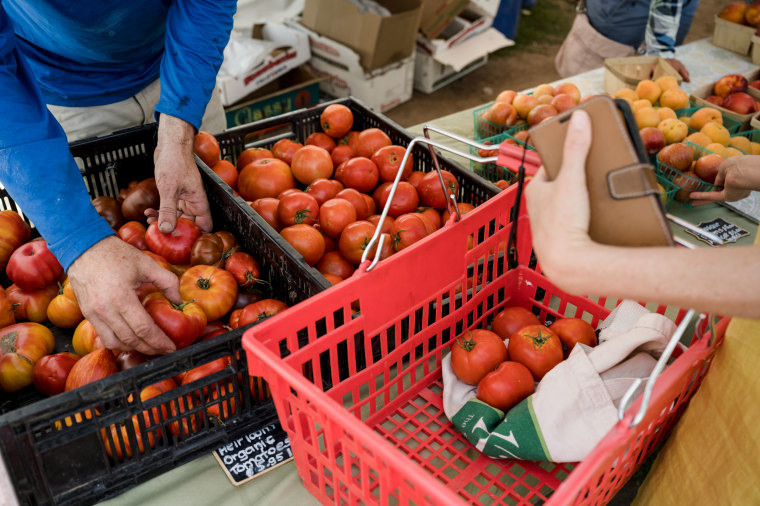The price of groceries continued to soar in the 12 months that ended in August, climbing by 13.5% — the biggest increase since 1979.
Many food categories had double-digit 12-month increases, led by eggs, which surged by 40%; margarine, up by 38%; and flour, which jumped by 23%.
In its latest monthly food price outlook, the Agriculture Department said factors across the economy, including supply chain issues and higher energy, transportation and labor costs, have contributed to increases in prices across food categories.
The price of a dozen large grade-A eggs has hit a record high of $3.12 — up by 82.3% from a year ago. The Agriculture Department said a bird flu outbreak has reduced egg-producing flocks, causing prices to surge.
"This outbreak has contributed to elevated egg prices and increasing poultry prices as over 40 million birds, 189 commercial flocks, and 39 States have been affected," the department said.
But otherwise, the ongoing cost increases across nearly every food category are "perplexing" given declining energy and commodities prices elsewhere, said Jayson Lusk, distinguished professor and head of the Department of Agricultural Economics at Purdue University.
One likely cause, he said, is ongoing increases in food industry labor costs. BLS data show hourly wages in food manufacturing hit another record high in August amid labor shortages, climbing approximately 6% year-on-year to $24.39.
If there’s any consolation, it's that prices could begin falling soon. A monthly survey from Purdue found that consumer estimates of annual food price inflation for both the past 12 months and the next 12 months are decreasing, which "suggests that the fall in price categories like gas might be influencing consumers to believe that food prices are falling too," the survey's authors wrote.
The USDA also said food price growth in many categories should abate through the end of the year and into 2023, thanks to higher interest rates, lower commodity prices and lower energy prices.
For instance, favorable growing conditions in places like Australia and Canada have contributed to record wheat and wheat flour production volumes, the department said, putting downward pressure on farm and wholesale prices.
"Food prices are expected to grow more slowly in 2023 than 2022, but still above historical average rates," the Agriculture Department said.

